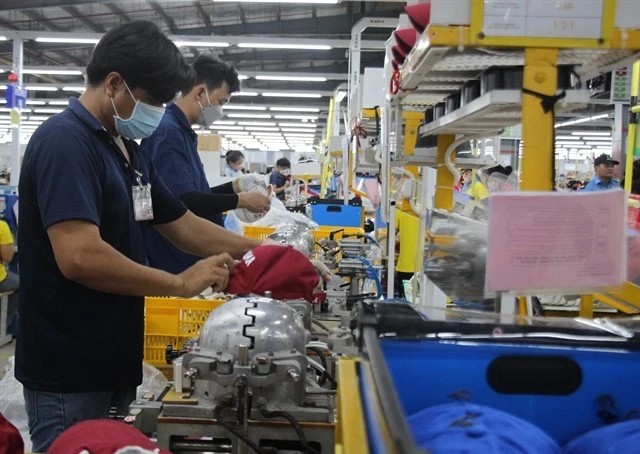Vietnam may lose five million jobs to automation: ILO
As many as five million workers in Vietnam are at high risk of losing their jobs by 2020 because of the boom in artificial intelligence, which may replace laborers with robots, according to a recent study by the International Labor Organization (ILO).

The quality of Vietnamese human resources stood at only 3.79 out of 10 points, ranking the country 11th out of 12 countries surveyed in Asia, said Tran Anh Tuan, deputy director of the HCM City Center of Forecasting Manpower Needs and Labor Market Information, as quoted by Thanh Nien newspaper.
The country also had a low competitive ability index, earning 4.3 out of 10 points and being placed 56th among 133 countries, while only 20.3 per cent of the workers had adequate qualifications in 2015. Moreover, Vietnamese laborers lack the necessary skills in foreign languages, information technology, teamwork and communication, besides responsibility.
In the next 20 years, more than half of the workers in five Southeast Asian countries, including Vietnam, may lose their jobs, with those in the textile-garment sector being the most vulnerable.
The ILO’s study shows that most of the workers in the apparel sector are from Indonesia, Vietnam and Cambodia, with 64 per cent, 86 per cent and 88 per cent of them respectively likely to lose their jobs to automation.
Many domestic enterprises, such as Viet Thang Jean Co., Ltd, (VitaJean), have invested heavily in modern technologies and equipment, thus reducing the number of workers. VitaJean expects to replace 60-80 per cent of its employees with machines.
According to Pham Van Viet, general director of VitaJean, the number of workers may be cut to 450 from the current 1,800. The company will complete installing automatic production lines by next year, enabling it to reduce the prices of products by 20 per cent and recover the investment within five years.
Gas stove manufacturer Namilux has also automated its production lines. The application of advanced technology will help enterprises reduce the number of laborers to one-third, one-fourth or even one-tenth of their current payrolls, Namilux General Director Nguyen Manh Dung said.
Despite high costs, it is necessary for enterprises to automate their production lines to raise their competitiveness and avoid lagging behind the market or going bankrupt, he added.
Do Quynh Chi, director of the Research Center for Labor Relations, cited data from the ILO to warn that 86 per cent of Vietnamese workers in the textile-garment, footwear and electronics sectors will be replaced with robots by 2050.
According to Vu Quang Tho, head of the Institute for Workers and Trade Unions under the Vietnam General Confederation of Labor, the trend of using modern equipment and technology rather than workers is aimed at generating higher profits.
As for solutions to support the workers, Tho called for the improvement of manpower skills so that they can operate modern equipment. In addition, the Government should issue effective welfare policies for workers.
He also stated that enterprises, especially foreign-invested ones, must commit to hiring a certain number of local workers and providing them with the training needed to run modern machines before they are permitted to do business in the country.
Nguyen Dinh Hoa, dean of the Faculty of Labor Relations and Trade Unions of Ton Duc Thang University, stressed that the number of local enterprises replacing workers with robots remained small. However, the trend is unavoidable, so it is crucial to provide training for workers./.
VNF/Saigon Times
Recommended
 National
National
Vietnam News Today (Jun. 7): Prime Minister works with Estonian firms to accelerate projects in Vietnam
 National
National
Vietnam News Today (Jun. 6): Foreign Investment in Vietnam Surges in Five Months
 National
National
Vietnam News Today (Jun. 5): PM sets off for attendance at UNOC 3 in France, official visits to Estonia, Sweden
 National
National
Vietnam News Today (Jun. 4): Vietnam - Promising Candidate for Southeast Asia’s Next Powerhouse
Popular article
 National
National
Shangri-La Dialogue 22: Vietnam Highlights Some Issues of Ensuring Stability in a Competitive World
 National
National
Vietnam News Today (Jun. 3): PM Pham Minh Chinh to Attend UN Ocean Conference, Visit Estonia, Sweden
 National
National
Vietnam News Today (Jun. 2): Vietnamese Trade Mission Sounds Out Business Opportunities in United States
 National
National



